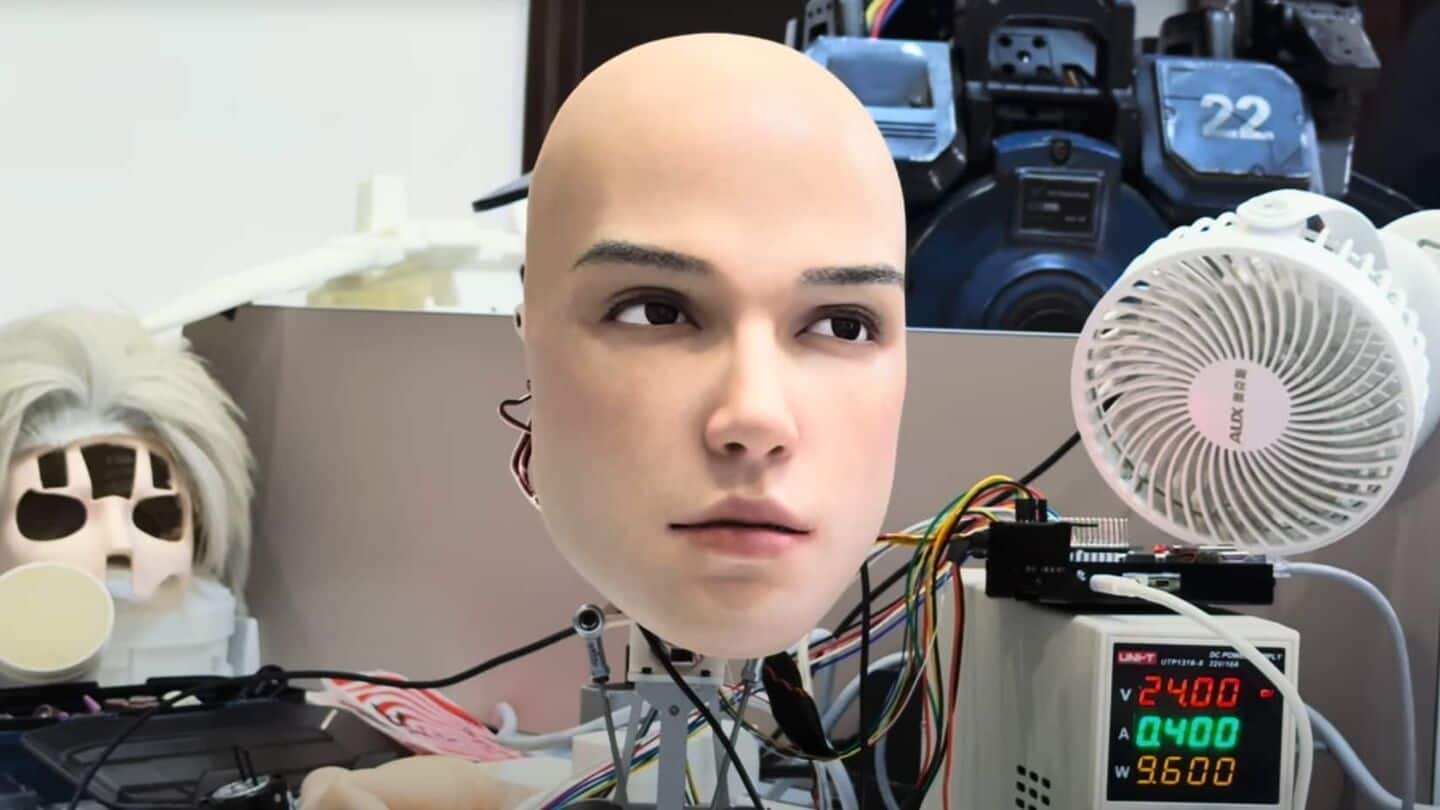
This humanoid robot head can mimic your expressions, subtle movements
What's the story
AheadForm, a robotics company from China, has unveiled an ultra-realistic humanoid robot head. The innovative creation is capable of mimicking human-like behavior, including blinking and nodding. It also shows subtle facial movements, making it look more relatable and approachable. This major development in robotics technology could significantly impact the way we interact with machines in the future.
Realism
Enhancing non-verbal communication
The robot head from AheadForm is capable of extremely lifelike actions like twitches, quizzical looks, and subtle eye movements. These are designed to replicate human emotional cues. The idea behind these features isn't just to make the robot look real but also to improve non-verbal communication between humans and machines. This could make interactions a lot smoother and more natural than they currently are.
AI integration
Integrating AI for better interaction
AheadForm is also planning to integrate advanced artificial intelligence (AI) with these lifelike robot heads. This includes large language models (LLMs) that would allow the robots to understand context, respond in real time, and adapt their facial expressions according to human behavior. The goal of this integration is to create a more immersive and interactive experience for users interacting with these advanced machines.
Applications
Potential applications in various industries
The technology behind AheadForm's humanoid robot head could be applied in a number of industries, including customer service, education, entertainment, and healthcare. By giving machines realistic human expressions, we could make interactions more intuitive. This could lead to increased user engagement and trust in robotic assistants across different sectors.
Future implications
The future of human-robot interaction
The development of highly realistic robotic faces opens up exciting possibilities for human-robot teaming. As these robots fuse AI intelligence with human-like expressions, they could evolve from mere tools into companions. This would enable subtle engagement during social interactions and challenge our traditional notions of what constitutes humanity in machines. The future of robotics looks promising with such advanced technologies on the horizon.